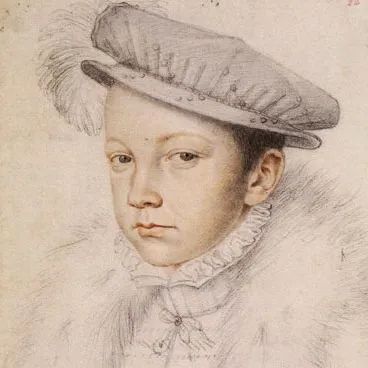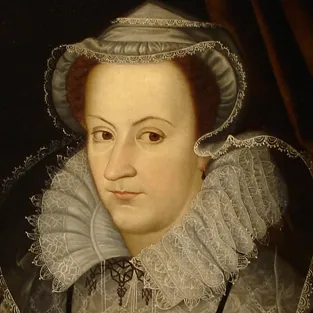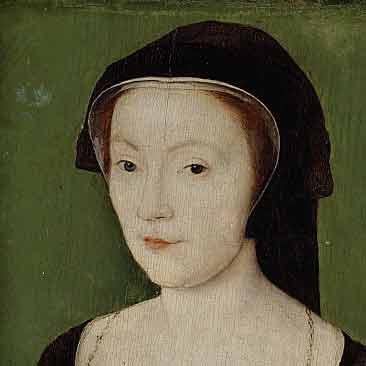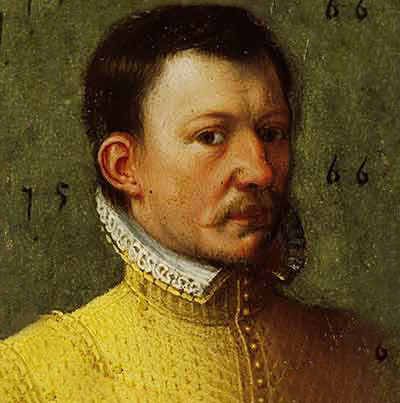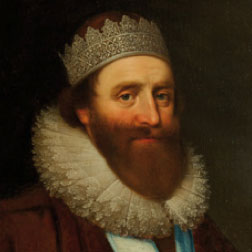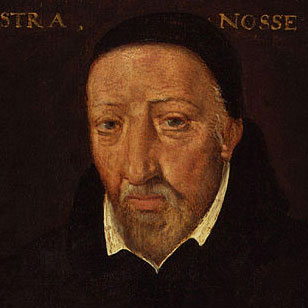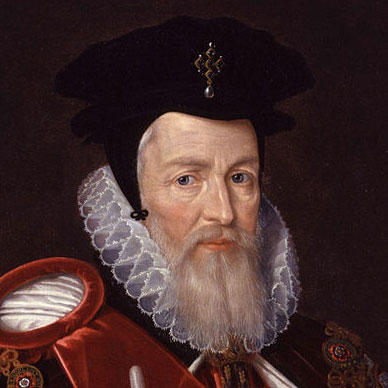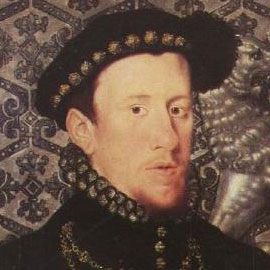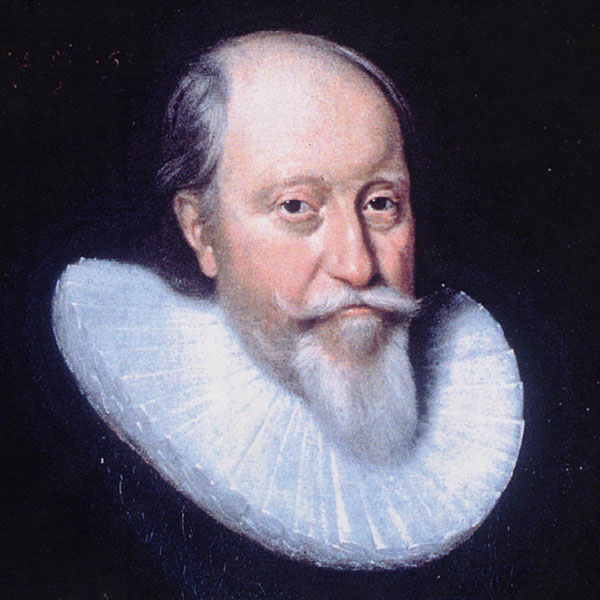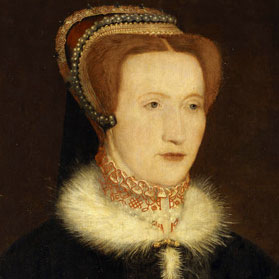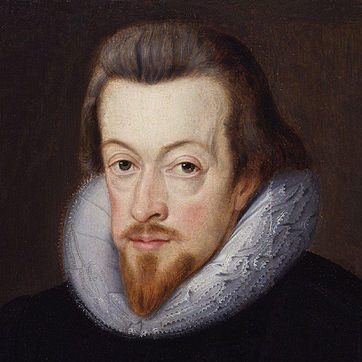Catherine de Medici was aged twenty-four and had been married to Henry II of France for ten years, before she at last conceived a child. In desperation she had turned to a Doctor, Jean Fernel, for advice. No one knows what he said, but he proposed a solution to the problem said to involve a prescription of pills of myrrh. Whether by good luck or the doctor’s advice, Catherine almost immediately became pregnant. Her first child, Francis, born in 1544, suffered from respiratory difficulties, which stunted his growth.
With Henry VIII of England determined to encompass Scotland under English control, he had proposed that his son Prince Edward should marry the infant Mary Queen of Scots. He reinforced this with a series of punitive expeditions into southern Scotland, known as the Rough Wooings, causing a great deal of damage. With the Scots having no military means to defend themselves, Henry II offered to liberate them, if Mary would become betrothed to his son, the infant Dauphin Francis. He sent his personal galley from France to collect her. On 29 July 1548, aged five years and eight months, Mary boarded it at Dumbarton and, after eighteen stormy days at sea, landed at St. Pol de Leon on the Brittany coast.
In December 1548 shortly after Mary’s arrival, she made her first public appearance with the Dauphin to celebrate the wedding of her uncle Francis, Duke of Guise to Anne d’Este, daughter of the Duke of Ferrara and a granddaughter of Louis XII. Now aged six and wearing a heavily brocaded dress embroidered with jewellery, she danced with the diminutive four-year-old Dauphin, to whom she was betrothed, and stooped down at the end to kiss him on the lips as royal formality required. The Constable Montmorency wrote to Mary’s mother, Mary of Guise, in March 1549:
I will assure you that the Dauphin pays her little attentions, and is enamoured of her, from which it is easy to judge that God gave them birth the one for the other. [1]
Mary learned to cosset the Dauphin despite his limited abilities, cherishing him like a younger brother, and encouraging him in riding and other outdoor pursuits.
On 24 April 1558, following the heroic capture of Calais by the Duke of Guise, Mary married the hapless and stunted Dauphin, in a ceremony full of spectacle at Notre Dame. Mary was ‘arrayed in her regal trappings, so covered in jewels that the sun itself shone no more brightly, so beautiful, so charming withal as never woman was.’ [2] The diminutive puffy-faced Dauphin limped along ahead of his household accompanied by his younger brothers, Charles and Henry. He hated public occasions, and the crowds had come to view his spectacular bride, who towered over him. On her head was a gold crown studded with diamonds, pearls, rubies, sapphires and emeralds surrounding a huge flashing ‘carbuncle’ said to be worth more than 500,000 crowns. She wore this with her hair down to show off her luxuriant tresses. On the wedding morning, she wrote to her mother, ‘All I can tell you is that I account myself one of the happiest women in the world.’ [3]
The wedding, which involved a nuptial mass was conducted by the Cardinal Archbishop of Rouen. Afterwards, the couple walked in front of the cheering crowd before processing to the Archbishop’s palace for a banquet that included dancing. Mary removed her heavy crown, enabling her to show off her hair as she danced with the King to applause from the invited guests. It was expected that she would dance with the Dauphin, but Henry led her to take the floor with his daughter Elisabeth to avoid it being seen that she towered above her clumsy stunted husband. By the end, Mary might have been forgiven for being ‘ill-disposed’.
Nine days before the ceremony in a low-key negotiation, Mary publicly confirmed the French guarantee of Scottish independence as agreed by the Treaty of Haddington. After some discussion it was agreed that Francis would not immediately become King of Scotland, but their eldest son would inherit both kingdoms. If there were only daughters, the eldest would inherit Scotland alone, as Salic laws prevented female succession in France. Yet, after further negotiation, Francis was granted the Crown Matrimonial, which would allow him to inherit the Scottish Crown, should Mary die childless, but this was never approved by the Scottish Parliament.
The powerful Guises encouraged the confident young Queen-Dauphine to dominate royal decisions by acting as spokesman for her stuttering and sickly husband. In addition to his continuously running nose, eczema and dizzy spells, he seems to have been impotent,*1 and Mary had no sexual expectation, despite their genuine affection. They made an incongruous couple. Although he grew considerably after their marriage, she still towered over him. He was prone to temper tantrums and, frustrated by his physical shortcomings, dressed in ridiculously ostentatious attire. His principal pleasure was taking Mary on ever more active hunting expeditions. For the time being, Henry II was king, and his advisers made every effort to temper Guise influence.
On the death of ‘Bloody’ Mary Tudor in 1558, Elizabeth was considered illegitimate in Catholic eyes. Henry II immediately claimed the English Crown for his daughter-in-law, thereby uniting France and Scotland with England and Ireland. Her arms at the French court were quartered with those of England. Yet France was exhausted by war and needed a period of peace. In 1559, it was forced into endorsing Elizabeth as Queen at the Treaty of Upsettlington. Yet Mary was dynastically next in line.
On 30 June 1559, Henry II was badly wounded in a jousting accident in Paris and died in agony ten days later. Francis and his consort Mary, were now King and Queen of France. This allowed the Guises to take control of Government, and to reintroduce their plan to subsume Scotland under France. The great seal of Scotland was redesigned to show Francis and Mary seated in Imperial Majesty. Throckmorton, the English Ambassador, wrote increasingly concerned dispatches after being invited to eat at the French court off plate emblazoned with their arms quartered with those of England. The young King and Queen each confirmed to him that they would act in accordance with her uncles’ advice. The Guises were now taking key decisions without consultation and encouraged Francis and Mary to enjoy their hunting. As the official age of majority for kings in France was fourteen, there was no initial call for a regency, but, with Francis lacking any aptitude for government, the Guises retained control.
On 18 September 1559, with the court still in mourning, Francis was crowned King Francis II at Reims by its archbishop, the Cardinal of Lorraine. It took four nobles to support the Crown of Charlemagne over his puny head. As a queen regnant, Mary was not crowned, but appeared in white, the traditional colour of mourning in France, conveniently the colour that suited her best. Francis was soon exhausted, starting to yawn at the banquet afterwards, seated in accordance with tradition at a table by himself. This brought the event to a hasty conclusion.
Catherine de Medici also started to grow in stature. On 15 August 1559, Francis granted his mother ‘the most opulent settlement that had ever been made to a queen dowager’. Francis began every letter, ‘This being the good pleasure of the Queen, my lady-mother, and I, also approving of every opinion that she holdeth, am content and command that …’ Mary wrote to the Queen Regent in Scotland, ‘I believe that if the King her son were not so obedient that he does nothing but what she desires, she would soon die, which would be the greatest misfortune that could happen to this country and to all of us.’ [4]
About a month after Henry’s death, Mary started to believe that she was pregnant. Given the accepted view that Francis was sterile, it is hard to envisage that she genuinely thought this. If true, it would have placed her in an unassailable position as the mother of a Valois heir. She would be positioned behind the throne in the event of her husband’s early demise. Yet by September she realised this was a false alarm. Although the Guises must have been disappointed, they made light of it, pointing out that a sixteen-year-old king and his young bride had plenty of time to produce children.
Yet Catherine and the Guises had great concerns about Francis’s well-being. They will have been well aware of his sexual shortcomings, with such matters being common knowledge within the inner circle close to the Crown. He was also increasingly unwell. His face had become blotchy and his continuing running nose and dizziness were caused by an abscess developing behind his ear. He progressively deteriorated for about a year before he died, and Catherine positioned herself in the event of having to face the worst. Already an adept political intriguer, she remained at Mary’s side showing her maternal kindness, while almost imperceptibly weaning her from her uncles’ influence, loosening their grip on power. She eventually became the principal force in government, Regent in all but name. Yet she too faced criticism. Pamphlets were describing her as a whore with a leper*2 for a son.
In early 1560, Huguenot rebels tried to gain control of the King while the court visited Blois. After gaining wind of it, on 21 February, the Guises moved the court to Amboise. Catherine took on the role as conciliator and arranged an amnesty. Eventually, on 15 and 16 March, most of the ringleaders were rounded up and were beheaded in front of the King and his mother. She was persuaded that Guise bloodlettings were counterproductive, and brought her long alliance with them to an end.
In mid-November, after hunting near Orléans, Francis complained of a recurring dizziness and a buzzing in his ear. On the following Sunday, he collapsed in church and had a swelling ‘the size of a large nut’[5] from an abscess behind his ear, causing stabbing pains in his head. When the doctors lanced it, puss was discharged through his mouth and nostrils, providing temporary relief, but he remained gravely ill. By late November, he was suffering seizures and was unable to move or speak. Mary and Catherine nursed him between them and sought divine aid by walking in procession with his brothers to nearby churches. The doctors bled him, purged him with enemas including rhubarb and considered boring through his scull to relieve the pressure. This was averted when the discharge appeared to stop, only to be followed by another substantial eruption of puss from his ear, nose and mouth, which made him delirious. On the morning of his death on 5 December 1560, he was completely debilitated and, after lying prostrate all day, died in the late evening. He had not reached his seventeenth birthday. The lingering hopes of the Guises were left in tatters. Catherine de Medici had no further need to cosset her daughter-in-law, and Mary had little choice but to return to her kingdom in Scotland.
References
[1] De Ruble, p. 30
[2] Jebb, II, p. 671, Translated Strickland, Queens of Scotland, VII, p. 499, cited by Lady Antonia Fraser, p. 628
[3] Mary to Marie of Guise, 24 April 1558, Hay Fleming, p. 492
[4] Labanoff, I p. 71-2
[5] See Dr. Potiquet, La Maladie et La Mort de Francois II; Armstrong-Davison, Appendix A
Bibliography
– De Ruble, Alphonse, La Première Jeunesse de Marie Stuart, 1891
– Jebb, S., De Vita et Rebus Gestis Sereuissima Principis Marie Scotorum Reginae, Franciiae Dotariae, 1725
– Fraser, Antonia, Mary Queen of Scots, Weidenfeld & Nicholson, 1969
– Hay Fleming, D., Mary Queen of Scots from her birth to her flight into England, 1897
– Labanoff, Prince, (A. I. Lobanov-Rostovsky) Lettres de Marie Stuart, 1844
– Armstrong-Davison, M. H., The Casket Letters, 1965
*1 Francis II’s testicles were deformed. Regnier de la Planche, a close confidant of Catherine de Medici, recorded that he had ‘genital organs all constrained and blocked making him unable to perform’. It is now believed that Francis’s stunted growth can be explained by primary hypopituitarism, a defect in the growth of the pituitary gland. This would also have resulted in his testicles failing to develop normally, causing sterility. The only reason for assuming that some kind of sexual union was achieved is Mary’s belief in the autumn of 1559 that she might have become pregnant, but this is more likely to have been a misunderstanding arising from her irregular menstrual cycle, from which she was known to have been suffering.
*2 Francis II’s blotchy face with eczema and acne was often mistakenly thought to be leprosy.

